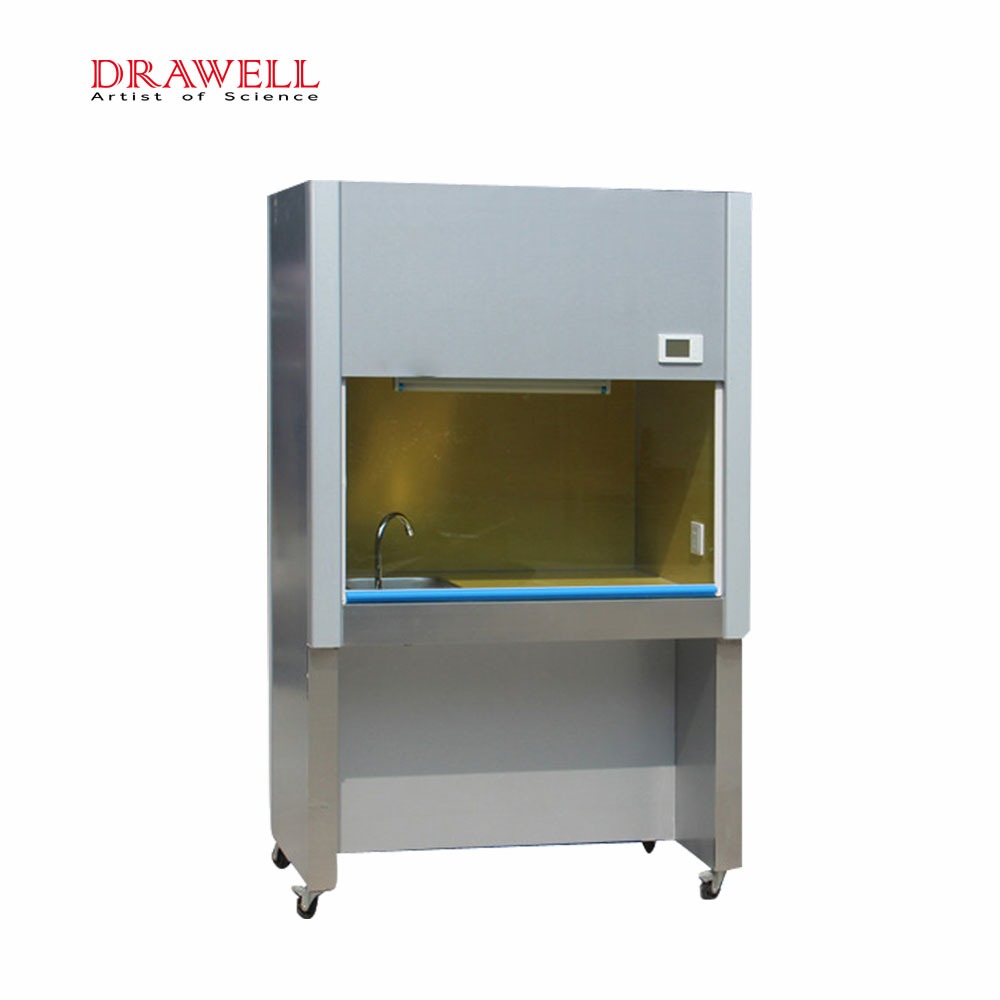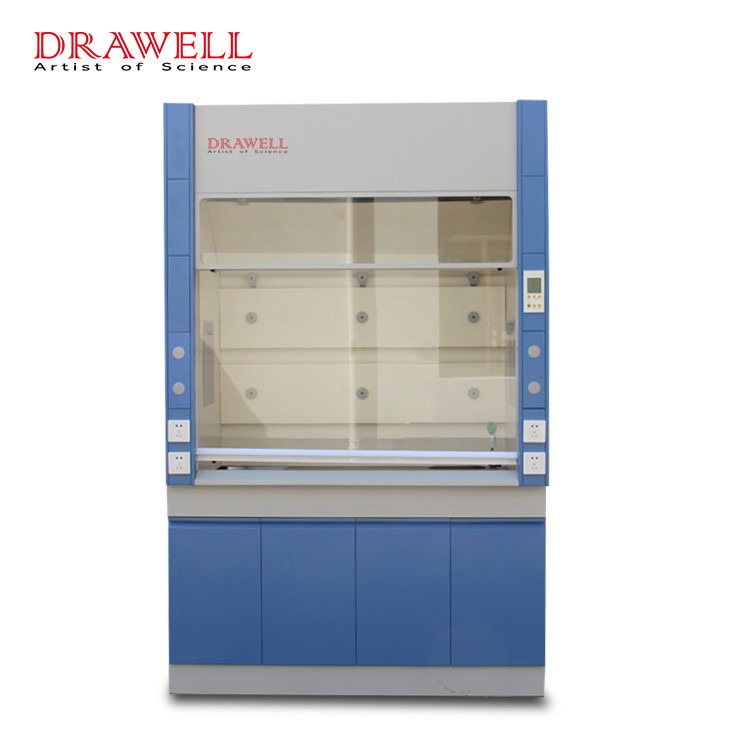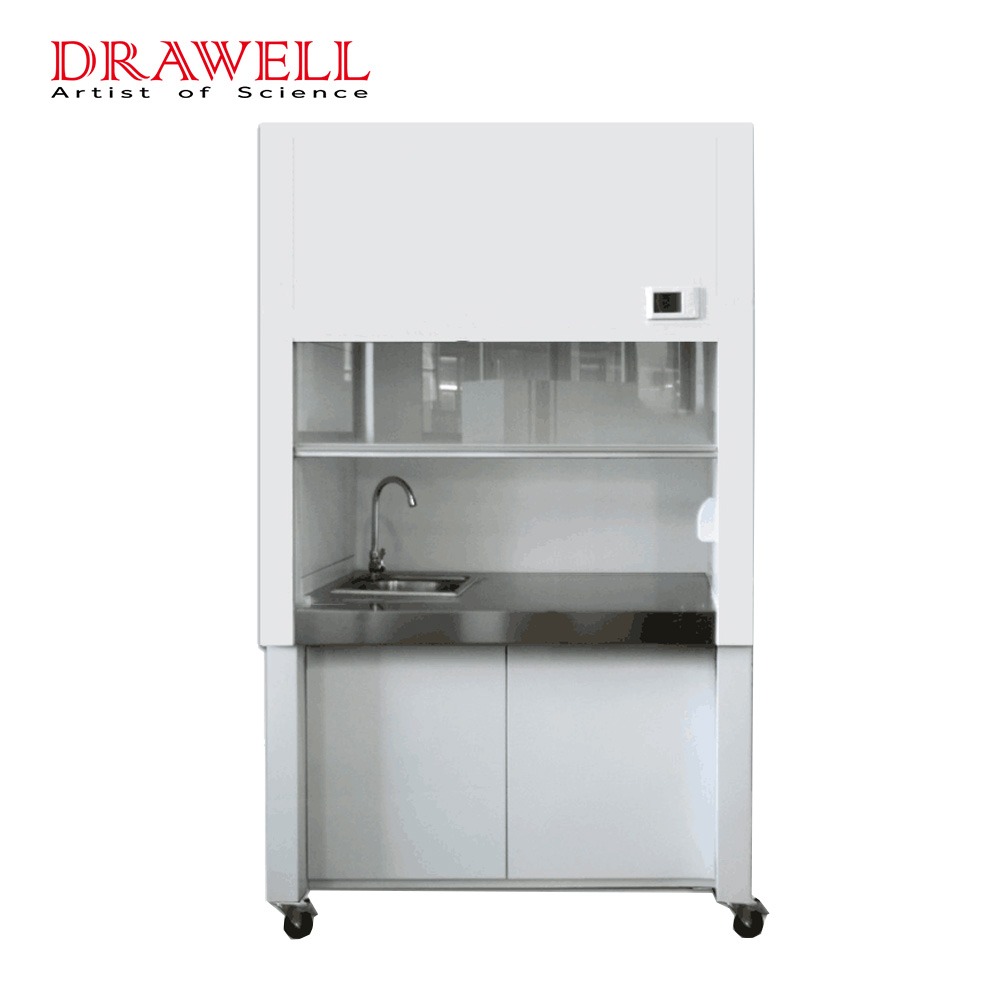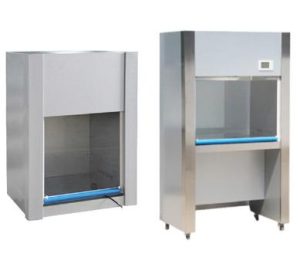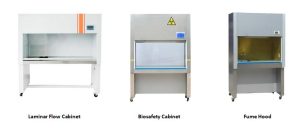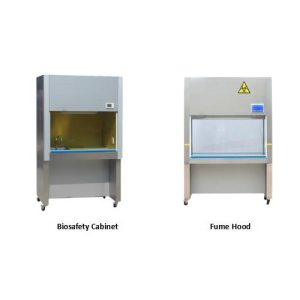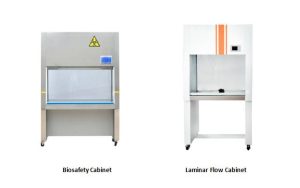In labs fume hoods are a vital tool for a safe working environment. They are designed to capture, contain and exhaust hazardous fumes, vapors and particulate matter, preventing exposure to dangerous chemicals and keeping lab personnel safe from airborne contaminants. But having a fume hood is not enough; fume hood safety requires proper use, regular maintenance and compliance with safety standards.
Fume Hoods in Laboratory Safety
Fume hoods are the first line of defense against chemical exposure in many lab settings, especially in chemistry, biology and pharmaceutical research. When toxic substances are handled or volatile reactions are performed a fume hood draws air through a ventilation system, pulls harmful gases away from the user’s breathing zone. The air is filtered or directed outside, keeping the workspace safe and free from fumes, gases and vapors that can be harmful to health.
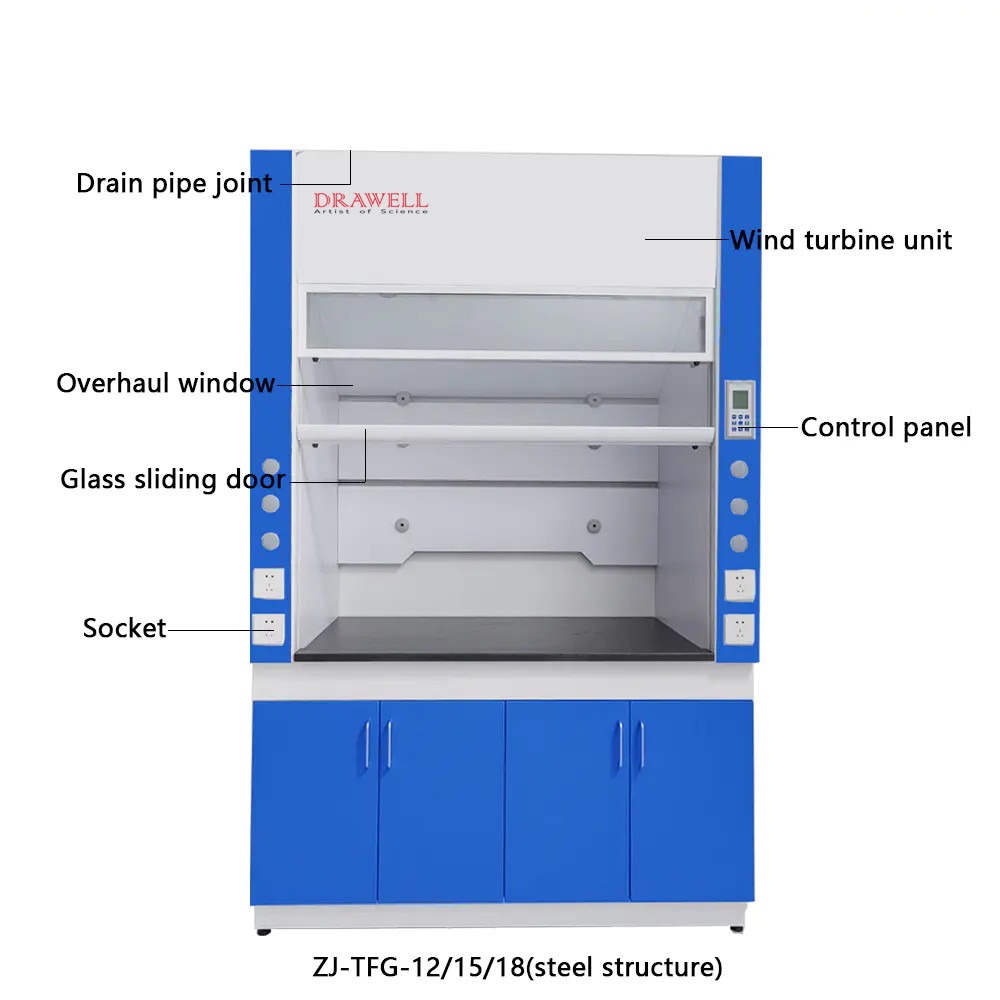
Best Practices for Using Fume Hoods
Adopting best practices ensures that fume hoods function effectively, minimizing the risk of exposure and promoting a safer laboratory environment.
- Maintain Proper Sash Position: To optimize fume hood performance, it’s crucial to position the sash at8 inches above the work surface. By doing so, you can improve airflow and containment, while also creating a safe physical separation between the user and any hazardous reactions or materials being handled.
- Keep the Work Area Organized: Maintaining a clutter-free workspace within the fume hood is crucial for optimal performance. Only necessary items should be stored inside, and they should be positioned at a safe distance from the opening – at least six inches – to facilitate smooth airflow and efficient capture of airborne contaminants.
- Work at Least Six Inches Inside the Hood: Maintain a distance of at least six inches inside the fume hood while working. This zone ensures proper airflow to remove fumes and contain hazardous substances, minimizing the risk of exposure.
- Minimize Sudden Movements: To ensure safe operation of the fume hood, it is crucial to avoid abrupt gestures and sudden arm movements near the opening. Instead, hands and arms when accessing the hood to prevent airflow disturbances and maintain effective fume containment.
- Avoid Blocking Air Slots and Exhaust: To maintain optimal performance, ensure that fume hood air intakes are unobstructed. Placing large equipment or setting up experiments near the front of the hood can restrict airflow and significantly impair the exhaust system’s ability to remove contaminated air. Instead, locate larger equipment towards the rear of the hood and verify that air pathways remain
- Close the Sash When Not Actively Working: Be sure to shut the fume hood sash when you are not using it. Keeping the sash closed helps to safeguard the lab from any unforeseen spills, reactions, or equipment malfunctions that may occur. Some newer fume hoods have energy-efficient settings that kick in when the sash is closed, saving on expenses while maintaining safety standards.
- Wear Proper Personal Protective Equipment (PPE): Despite having a fume hood that works well, it is important for individuals to wear the proper PPE such as lab coats, safety goggles, and gloves. Certain dangerous substances may still present dangers, and wearing PPE is crucial for an added level of protection in addition to the safety measures provided by the hood.
Fume Hood SW-TFG-12 15 18
• Working area size: 1030*695*580/1300*695*580/1600*695*58mm
• Fluorescent lamp: 20W*1PC/30W*1PC/20W*2PCS
Maintenance and Inspection for Fume Hood Safety
To guarantee routine upkeep is crucial. Prolonged operation, environmental conditions, and unforeseen incidents can all impact the hood’s ability to provide adequate airflow and containment. Proactive maintenance helps prolong the equipment’s lifespan and identifies potential problems early on, preventing them from escalating into significant safety risks.
- Key Elements of Fume Hood Maintenance
Cleaning is a fundamental part of fume hood maintenance. Interior surfaces should be wiped down regularly with appropriate cleaning agents to prevent buildup of chemicals, residues, or particulate matter that could interfere with airflow or react dangerously.
Airflow calibration is another critical maintenance step. Over time, the airflow rate can drift due to mechanical wear or changes in the building’s ventilation system. Regular testing and recalibration guarantee that the fume hood consistently maintains the face velocity necessary for proper containment.
Mechanical components such as the sash, counterbalance systems, hinges, and lights must also be inspected and serviced. The sash should move smoothly and stay in position as intended. Damaged seals or misaligned components can drastically reduce the hood’s efficiency and safety.
- Routine Inspection Procedures
Routine inspections should be scheduled at least annually, though high-use or high-risk laboratories may require more frequent checks. Certified technicians typically conduct performance tests that include:
- Face Velocity Testing: Measuring the air velocity across the sash opening to ensure it meets established standards (usually around 80–120 feet per minute, depending on the application).
- Smoke Testing: Using visible smoke to observe airflow patterns and verify that vapors are being properly drawn into the hood.
- Visual Inspections: Checking for any cracks, damaged surfaces, blocked vents, or worn seals.
- Alarm and Monitor Functionality Checks: Ensuring that airflow alarms and monitors are properly working and calibrated.
Documentation of all inspections and maintenance actions should be kept up to date. These records help track trends over time and prove compliance with regulatory safety requirements.
- Responding to Performance Issues
If inspection or maintenance activities reveal performance issues, such as low face velocity, turbulence at the sash opening, or visible escape of smoke, the fume hood should be taken out of service until it is repaired. Users must be trained to recognize warning signs of hood malfunction, such as unusual noises, airflow alarms, or noticeable odors escaping from the hood.
Corrective actions may involve recalibrating airflow, repairing or replacing mechanical parts, or even conducting a full assessment of the laboratory’s ventilation systems if broader issues are detected.
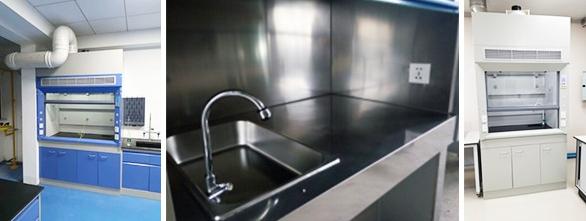
Standards and Regulations for Fume Hood Safety
| Standard/Regulation | Issuing Body | Focus Area | Key Points |
| ANSI/AIHA Z9.5 | American National Standards Institute / American Industrial Hygiene Association | Laboratory ventilation standards | Sets performance requirements for fume hoods, including face velocity and maintenance. |
| OSHA 29 CFR 1910.1450 | Occupational Safety and Health Administration | Occupational exposure to hazardous chemicals in laboratories | Requires employers to maintain proper functioning fume hoods as part of a Chemical Hygiene Plan. |
| NFPA 45 | National Fire Protection Association | Fire protection for laboratories using chemicals | Specifies design, installation, and performance standards for fume hoods to prevent fire hazards. |
| ASHRAE 110 | American Society of Heating, Refrigerating and Air-Conditioning Engineers | Method of testing performance of laboratory fume hoods | Provides a testing method to evaluate fume hood containment using tracer gas tests. |
| SEFA 1-2010 | Scientific Equipment and Furniture Association | Recommended practices for fume hoods | Covers design, construction, and performance recommendations for fume hoods. |
| EN 14175 | European Committee for Standardization | European standards for fume hoods | Specifies requirements for safety, energy efficiency, and performance in fume hoods used in laboratories. |
| ISO 13849 | International Organization for Standardization | Safety of machinery – safety-related parts of control systems | Related to the control systems of fume hoods, focusing on reducing risk during operation. |
All Steel Fume Hood ZJ-TFG-12/15/18
• Face Velocity: 0.4—0.6m/s
• Airflow Speed: 1080—1700m7h
Training and Education on Fume Hood Safety
Training serves as the foundation for responsible fume hood use. It not only teaches users how to operate the equipment but also instills a deeper understanding of why specific practices are critical for personal safety and environmental protection. Good training programs reduce the likelihood of accidents, chemical exposures, and equipment failures caused by user error
- Core Topics in Fume Hood Safety Training
An effective fume hood safety training program should cover several core topics. First, it should introduce the basic function of a fume hood—containing and exhausting hazardous substances to protect users and the environment. Trainees should learn the correct methods of working within the fume hood, such as keeping materials at least six inches inside the sash opening, minimizing movement that can disrupt airflow, and maintaining a proper sash height.
Proper start-up and shut-down procedures must be emphasized. Users should know how to check the airflow monitor before beginning work and understand what actions to take if the airflow is inadequate.
Additionally, training should cover common mistakes to avoid, such as blocking airflow with large equipment, rapid sash movements, or leaning too far into the hood. Awareness of these pitfalls helps prevent breaches in containment.
- Hands-On Practice and Demonstrations
Theory must be reinforced with hands-on practice. New users should participate in live demonstrations where they observe correct fume hood use and then perform tasks under supervision. Practicing real-world scenarios—such as handling a spill inside the hood or reacting to an airflow alarm—builds confidence and ensures that proper techniques become routine.
- Advanced Training for Specialized Situations
Some laboratories use fume hoods for specialized applications, such as handling highly toxic materials, radioactive substances, or biological hazards. In these cases, additional training tailored to the specific risks is necessary. This includes understanding double containment protocols, specialized personal protective equipment (PPE) requirements, and emergency procedures unique to the materials being handled.
- Refresher Courses and Continuous Learning
Safety training should not be a one-time event. Regular refresher courses help reinforce good habits and update users on any changes in equipment, procedures, or regulations. Refresher training sessions should also incorporate lessons learned from incident reports or new industry developments to continuously improve safety culture.
- Evaluation and Certification
It is important to evaluate the effectiveness of fume hood training. Written tests, practical evaluations, and direct observation can help assess whether trainees have absorbed the necessary knowledge and skills. Some organizations provide certificates to individuals who successfully complete the training, reinforcing accountability and emphasizing the importance of fume hood safety.
Integrated All Steel Fume Hood DW-FH1200/1500/1800
• Exhaust speed: 0.25-0.45m/s
• LED lamp:28W*① / 30W*① / 40W*①
Summary
To ensure that fume hood provide maximum protection, it is crucial to use them properly, maintain them regularly and adhere to safety regulations. By following the best practices for fume hood safety, such as proper sash height, maintaining an uncluttered workspace, performing routine inspections and proper training, etc, fume hoods ultimately contributes to the health, well-being and productivity of laboratory workers while preventing exposure to hazardous substances.
Related Products Recommendation
Get Quote Here!
Latest Posts
What Next?
For more information, or to arrange an equipment demonstration, please visit our dedicated Product Homepage or contact one of our Product Managers.

